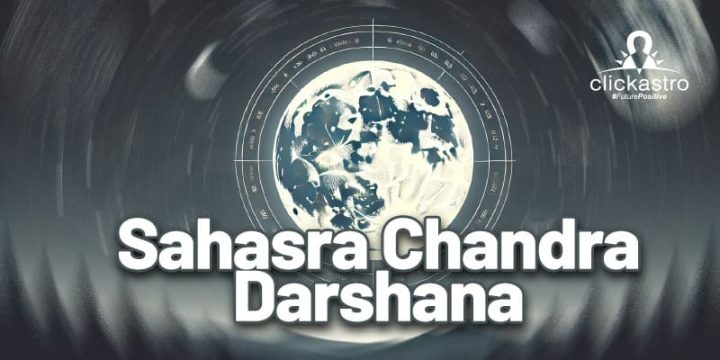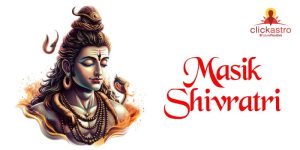In the rich culture of Vedic traditions, life’s milestones are marked by various rituals and ceremonies, each carrying deep astrological significance. Among them, the Sahasra Chandra Darshana stands out as a celebration of exceptional importance. This unique ritual marks the occasion when an individual witnesses 1000 full moons in their lifetime, a feat achieved around the age of 82. This milestone is more than a numerical achievement; it stands as a testament to longevity, wisdom, and divine blessings. Celebrated with great fervour, Sahasra Chandra Darshana reflects the culmination of a life well-lived, guided by the cycles of the Moon, which holds a pivotal role in Vedic astrology and Hindu culture. The ceremony brings together family, friends, and the community to honour the elder’s journey, reinforcing values of respect, humility, and spiritual growth.
Understanding Sahasra Chandra Darshana
Sahasra Chandra Darshana, translating to “seeing a thousand full moons,” celebrates an individual seeing 1000 full moons in their lifetime. This happens around 82 years of age. This milestone is calculated based on the lunar calendar, where twelve full moons occur each year. However, due to the lunar-solar calendar discrepancy, an additional month, known as Adhik Mass, is added approximately every 33 months to harmonize the cycles. This culminates in the recognition of 1000 full moons, marking a momentous event in one’s life.
Sahasra Chandra Darshana is also referred to as Vedayushya or Aseetidwayam in the Vedas. It signifies not just the passage of time but the accumulation of wisdom, experience, and divine grace over the years. The Sahasra Chandra Darshana is a celebration of longevity, reflecting the individual’s sustained journey through life’s various phases, guided by the celestial influence of the Moon.
In Vedic tradition, Sahasra Chandra Darshana is considered a rare and blessed occurrence, deserving of elaborate ceremonies that honour the individual’s life and contributions. It underscores the importance of the Moon in Vedic astrology and its profound impact on human life, symbolizing purity, wisdom, and prosperity.
The Significance of the Ritual
In Vedic astrology, the completion of 1000 full moon darshans in one lifetime is considered a significant achievement. The
nine planets (Navagrahas) are believed to take 120 years to complete their full cycles around the Sun, which is considered the ideal human lifespan. Within this grand cosmic framework, reaching the milestone of 1000 full moons, around the age of 82, is seen as a pivotal moment.
More than a testament to the individual’s survival Sahasra Chandra Darshana marks the transition of the person into a phase of higher wisdom and deeper spiritual fulfilment. The person is celebrated not only for their longevity but also for their resilience and the knowledge they have gathered, which is now seen as a treasure trove of guidance for younger generations.
In essence, the Sahasra Chandra Darshana symbolizes the harmonious alignment of one’s life with the cosmic order. It acknowledges the individual’s journey through life’s various stages, each influenced by the lunar cycles. This rare achievement is celebrated with elaborate rituals, prayers, and communal gatherings, underscoring its importance in both personal and spiritual dimensions. The ceremony reaffirms the interconnectedness of human life with celestial rhythms, emphasizing the enduring relationship between the individual and the cosmos.
Celebrations and Rituals
The Sahasra Chandra Darshana ceremony is an elaborate and joyous occasion, marked by a series of rituals and festivities. This significant event typically involves the participation of 11 learned priests, who begin the proceedings with the chanting of the Rudram, invoking the blessings of Lord Shiva. The recitation of these powerful Vedic hymns sets a sanctified tone for the ceremony, inviting divine energy and spiritual protection.
Following the chanting, a
havan (sacred fire ritual) is performed. The havan symbolizes the purification of the environment and the participants, creating a sacred space filled with positive energy. The smoke from the sacred fire is believed to carry offerings to the deities, further sanctifying the ritual. Concurrently, alms are distributed to Brahmins, emphasizing the values of charity and humility, which are core to the Vedic tradition. This act of giving is a way of expressing gratitude and seeking blessings for continued prosperity and well-being.
A key highlight of the ceremony is the ceremonial bath given to the person celebrating the milestone, along with their spouse. They are bathed with a mixture of honey, milk, and water, which symbolizes purification and renewal. This ritual bath is a physical and spiritual cleansing, preparing them for the blessings that follow.
After the bath, the couple is adorned in new clothes, symbolizing a fresh start and the shedding of past burdens. They then partake in the chanting of additional Vedic hymns, which infuse the ceremony with divine vibrations and blessings. These hymns, recited by the priests and attendees, elevate the spiritual atmosphere, reinforcing the sacredness of the occasion.
The ceremony culminates in a communal celebration, bringing together family, friends, and the community to honour the individual’s life and achievements. Through these elaborate rituals, the Sahasra Chandra Darshana becomes a memorable event, celebrating the individual’s journey and their harmonious alignment with the cosmic rhythms.
The Spiritual and Social Dimensions
The Sahasra Chandra Darshana transcends personal celebration, evolving into a communal event that unites family, friends, and well-wishers. This ceremony is an opportunity to honour the elderly’s wisdom and experiences, reinforcing societal values of respect and reverence for one’s ancestors and elders.
Central to the ceremony is the acknowledgement of the person’s journey through life. It becomes a platform to celebrate not just longevity but the wealth of knowledge and guidance that the elderly offer to younger generations. The presence of family and community members highlights the interconnectedness of individuals within the social fabric, fostering a sense of collective gratitude and respect.
Spiritually, the ritual serves to diminish the ego of the celebrant, reminding them of their place in the cosmic order. It emphasizes the importance of humility, as the person gets the chance to reflect on the divine grace that has enabled them to reach this milestone. This humility is nurtured through the various rituals, including the ceremonial bath and the chanting of Vedic hymns, which spiritually cleanse and renew the individual.
The event often mirrors the joyous atmosphere of a marriage, with the couple renewing their vows in a symbolic gesture of continued partnership and love. This renewal signifies the enduring strength of their bond, blessed by divine forces. The ceremony concludes with a communal vegetarian feast, bringing together all attendees, and fostering a sense of unity and collective celebration.
Through its rich spiritual and social dimensions, the Sahasra Chandra Darshana becomes more than just a personal milestone. It transforms into a celebration of life, community, and the enduring wisdom that elders bring to society, reaffirming the timeless values of Vedic tradition.
The Role of the Moon in Vedic Tradition
The
Moon, or Chandra, occupies a pivotal place in Vedic tradition, symbolizing a profound connection between the celestial and the earthly realms. Known as Soma in the Vedas, the Moon is revered as the lord of plants and vegetation, underscoring its vital role in sustaining life on Earth. The Moon’s phases are intimately connected to the
Hindu calendar, which is lunar-based, thus making Chandra Darshan (the sighting of the Moon) a spiritually potent event.
In Vedic astrology, the Moon is imbued with qualities of wisdom, purity, and benevolence. Its influence extends beyond the physical to the spiritual and emotional dimensions of life. The Moon governs the mind and emotions, and its proper placement in one’s horoscope is believed to bestow prosperity, mental clarity, and emotional balance. A well-placed Moon can lead to a harmonious and successful life, while its adverse positioning can cause emotional turmoil and instability.
The Moon’s influence is also considered cleansing and purifying. Its cooling, calming nature is seen as a source of peace and tranquillity, linking the devotee to higher realms of knowledge and positive energy. Rituals and fasts observed during significant lunar phases, such as Ekadashi and Purnima, are believed to amplify the Moon’s beneficial effects, purifying the soul and body.
In the Vedas, the Moon is depicted as a youthful, fair deity, associated with beauty, fertility, and the night. It rides a chariot pulled by ten white horses, signifying its regal and pure nature. The Moon’s connection to Soma, the elixir of life, further elevates its status as a celestial being that nurtures and sustains all forms of life.
The spiritual importance of the Moon is also reflected in its association with Monday, a day dedicated to its worship. Devotees perform rituals and offer prayers to Chandra, seeking its blessings for wisdom, prosperity, and mental peace. Through these practices, the Moon’s role as a nurturer and purifier is honoured, reinforcing its integral place in Vedic tradition and its profound impact on human life.
Conclusion
The Sahasra Chandra Darshana is a joyous celebration of life, marking the rare achievement of witnessing 1000 full moons. It is a time for reflection, gratitude, and renewal, bringing together the individual, their family, and the community in a shared expression of spiritual and cultural heritage. Through this sacred ritual, the person receives divine blessings, purifies their soul, and strengthens their connection to the universal consciousness.
By honouring this significant milestone, we not only celebrate the longevity and wisdom of the individual but also reaffirm our values and connections to the divine and each other.








